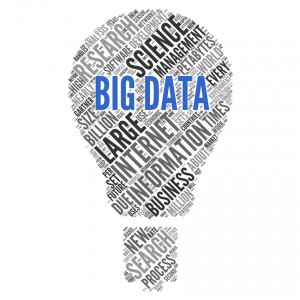Share This
Related Posts
Tags
Big Data
By Geneva Ives on Dec 20, 2013 in Technology
If you knew how visitors interac t with your website, what their ages and interests are, could you serve them better? Could you use information about your clients and potential clients to create more effective marketing?
t with your website, what their ages and interests are, could you serve them better? Could you use information about your clients and potential clients to create more effective marketing?
That’s what the National Association of REALTORS® (NAR) aims to find out. At the 2013 NAR Convention and Expo in San Francisco last month, chair Danny Frank hosted a talk about data collection titled Big Data and You: Predictive Marketing, Predictive Analytics and Data Visualization. Big data is essentially the aggregation of separate but potentially related information sets that can then be interpreted in a practical way.
For example, a website can collect data about the actions of its visitors and then use that data to predict and surface what the user will want to see or do or buy next. This is called predictive marketing. If you have ever noticed “You might also like” messaging on a site like Amazon or Netflix, then you have seen an example of a business using the data it collects to tailor its services to you.
In theory, big data can be used to develop predictive analytics that will improve user experience – both in the real world and online – and, as a result, increase profits. The retail applications of predictive marketing are apparent, but what are the applications for the real estate industry?
Several ideas were posited at the NAR talk mentioned above. Todd Carpenter, managing director for NAR’s recently created data analytics group, explained that analytics are like listening and “the more you listen to your client, the more you can serve their needs.” To that end, one of the group’s aims is to figure out how to use the mountains of data that NAR already has at its fingertips to develop tools that will help REALTORS® be more successful.
One idea suggested by speaker Ted Loring, NAR data strategies committee chair, is to develop a solution that tracks members’ license expirations and then uses that information to extend timely and relevant continued education opportunities, giving agents advanced notice to earn required hours. Or if NAR had access to agent transaction history, Loring indicated that the organization could apply that information to identify niches and then market related sales tools and programs.
Many in the audience were interested in pursuing these opportunities to identify potential benefits, but a few raised concerns about channel confusion, citing a possible conflict of duties between NAR, their MLS/association and their brokerage.
Outside of NAR discussions, what are other big data applications in real estate? For agents and brokers, predictive analytics can determine which property listings may be of interest to specific prospects, based on their user activity on agent- or broker-owned websites. Activating predictive marketing will send automated listing updates to targeted prospects. When the price of a property drops, interested parties will receive an email notifying them of the price change – giving the agent who sent the email a competitive advantage in the marketplace.
If property owners and managers interpret the various data they collect from prospects and clients who visit their websites, or even their rental offices, how can that information be applied to increase satisfaction, decrease turnover and spur higher occupancy rates? Can predictive analytics determine whether a resident is the right fit or if a new multifamily property will work with an existing portfolio? Smart money says yes.
For a more in-depth discussion about the potential collection and use of big data in the real estate sales industry, read Brian Summerfield’s article, “What’s the Big Deal About Big Data?”
How do you think big data will affect your business in 2014? Do you currently use any predictive marketing tools?
